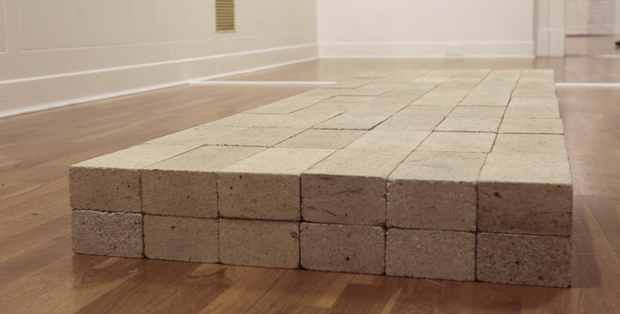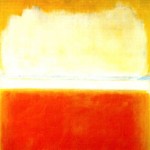
December 18, 2011, by Stephen Mumford
Equivalent VIII
What is art? Does it have a defining essence? Many have attempted to find it yet so many of the definitions seem flawed. Only a few hundred years ago, for instance, we thought of art as being about the faithful representation of a subject matter, such as in a portrait or landscape. But we are now all familiar with non-representational art such as Jackson Pollock’s or Mark Rothko’s. Clearly representation was not essential to something being art. Similarly if we think art is about the expression of the feelings of the artist we can find exceptions. A Rothko (example pictured) probably doesn’t express anything either.
If we are looking for a definition of art, therefore, counterexamples are one kind of challenge we will face. We may find that something is art but is not captured by the putative definition; or that something is captured by the definition and is clearly not art.
This makes it hard enough to define what we mean by art. But there is an even bigger problem. It seems we can have two indistinguishable objects and one could be a work of art while the other is not. Carl Andre’s 1966 sculpture Equivalent VIII illustrates what I mean. The work is a pile of 128 bricks arranged two-high in a rectangle. It is almost certainly art. The London Tate bought it in 1972 and exhibited it to great controversy in 1976. There was no reason why a builder could not have left an indistinguishable pile of bricks outside the gallery. The builder’s bricks would not be art but Andre’s were. How is this so if we couldn’t tell the difference between the two?
 Andre’s work and others suggest that the essence of art cannot be found in the intrinsic features of the work. But what else could it consist in? There is an answer to this puzzle that has been out of fashion but which I nevertheless find attractive. Art, in this theory, is a status bestowed upon certain forms of practice by a group of institutions: the galleries, critics, funding councils, agents, and so on. These institutions grew up around some of those forms of practice – around painting, sculpting, music, and so on – but they are now sufficiently powerful that they can deem new things to be art, such as performance art.
Andre’s work and others suggest that the essence of art cannot be found in the intrinsic features of the work. But what else could it consist in? There is an answer to this puzzle that has been out of fashion but which I nevertheless find attractive. Art, in this theory, is a status bestowed upon certain forms of practice by a group of institutions: the galleries, critics, funding councils, agents, and so on. These institutions grew up around some of those forms of practice – around painting, sculpting, music, and so on – but they are now sufficiently powerful that they can deem new things to be art, such as performance art.
As ever in philosophy, there is much room for argument. But we can see that prima facie this answers the problem of Equivalent VIII. It is art because Andre was knowingly engaging in a form of practice upon which the relevant institutions had bestowed the status of art. The builder was not doing so when leaving a pile of bricks outside.
I discuss the case in more detail, and the definition of art generally, in chapter 4 of my book Watching Sport: Aesthetics, Ethics and Emotion. (http://www.taylorandfrancis.com/books/details/9780415377904/)

What if Carl Andre had asked the builder to deliver the bricks to the Tate which the builder duly did. Then, looking at the pile of bricks, Andre decided he liked them exactly as they were? 50 quid to the builder, 2000 to Mr Andre.